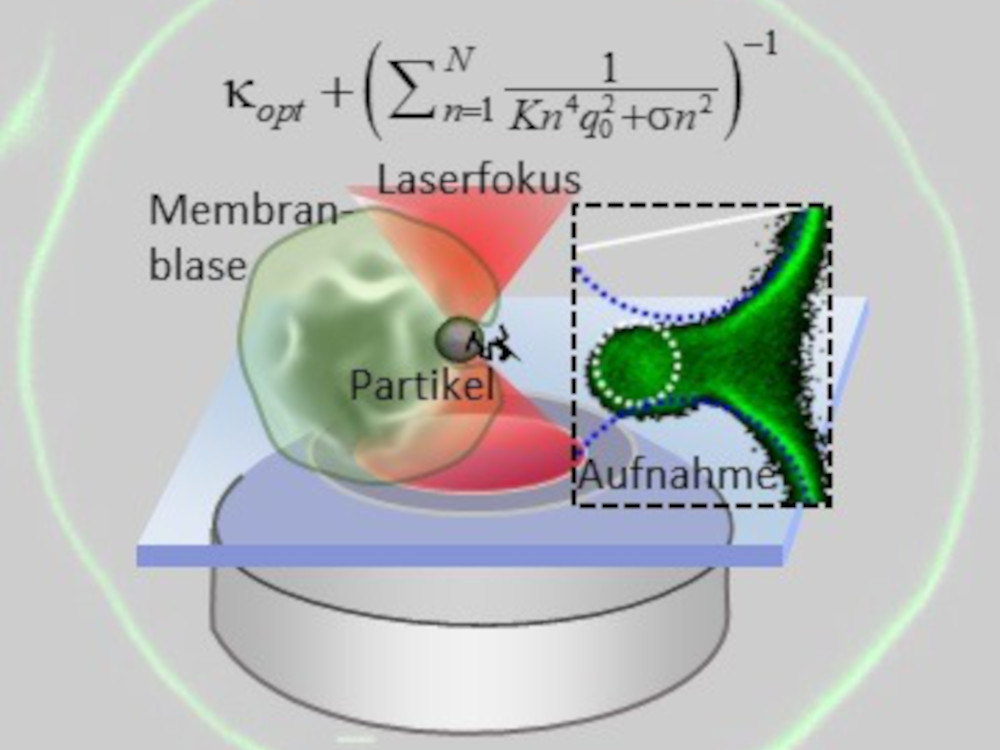
07 Mar Optical tweezers for infection studies
How does and what effort is required for a bacterium – or a virus – to enter a cell and cause an infection? Researchers at the University of Freiburg investigated this question using a model bacterium to study the physics of infection processes. The scientists used a giant unilamellar vesicles (GUV) about 20 µm in diameter as a biological model cell. The virus or bacterium was represented by a micrometer-sized round particle that was brought into contact with the membrane using optical laser tweezers. Optical tweezers are a laser trap that can capture, hold and bring the particle closer to the membrane in a controlled manner in small steps until contact occurs and the particle is taken up by the membrane bubble.
Laser tweezers serve as measuring instrument
The scientists explained that optical tweezers and laser light scattering can be used to measure not only the necessary forces and energies, but also the thermal movements of the particle that are required for its uptake. The membrane bubble and the particle were in aqueous solution at room temperature during the experiment. The water molecules lead to a characteristic quivering motion known as Brownian molecular motion or thermal fluctuations.
Oscillating cell membranes as door openers for bacteria
Using mathematical models and the motion measurements with one million particle positions per second, the researchers were able to show that the superposition of many membrane oscillation modes plays a decisive role: If the bacterium comes into contact with the membrane bubble, fundamental vibrations are increasingly suppressed and only modes with higher frequency, i.e. shorter vibrational lengths, survive. Since each vibrational mode of the membrane bubble has its own damping or friction, computer simulations can be used to estimate the summed damping and amplitude of all surviving modes. According to the scientists, both the measurements and the computer simulations showed that the energy required for membrane deformation by the particle until it is completely absorbed scales strongly with the stiffness and damping of the membrane motions.
The scientists were thus able to explain why bacteria with certain proteins (ligands) on their surface bind more easily to cells with specific membrane receptors. But most importantly, so the researchers emphazised, it can explain the extent to which a more fluctuating and less damped membrane reduces energy costs and thus increases the likelihood that the bacterium will be taken up, which corresponds to an increased risk of infection of the cell.
Publication:
[Ayala, Y. A., Omidvar, R, Römer, W., Rohrbach, A (2023): Thermal fluctuations of the lipid membrane determine particle uptake into Giant Unilamellar Vesicles. Nature Communications 14(1): 65. https://doi.org/10.1038/s41467-022-35302-5]
Source: uni-freiburg.de
Image: Group Rohrbach / Uni Freiburg






